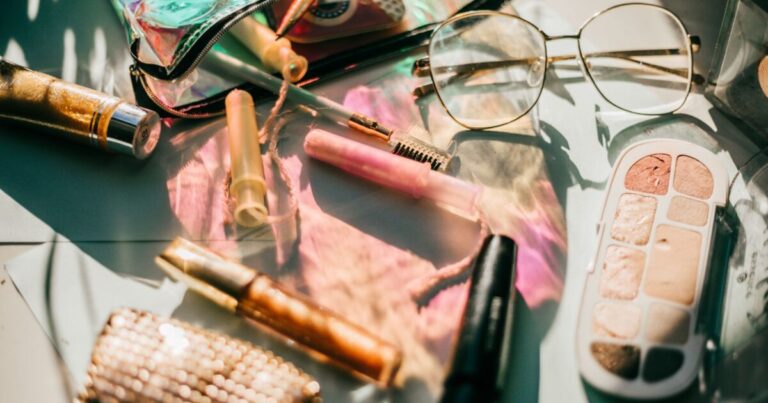Have you ever used every last tube of toothpaste, worn your favorite handbag until the seams started to fray, or had a kitchen full of mugs and cups of different colors? Congratulations, you may already be unknowingly participating in TikTok’s newest trend: “Underconsumption Core.”
The theme has already featured in 31 million videos on TikTok, and they all look pretty similar, with creators sharing nearly empty bathroom cabinets, capsule wardrobes, and well-worn sneakers — all in the name of underconsumption.
What are “under-consumed cores”?
Simply put, underconsumption core means buying only what you really need and wearing it over and over again until it’s worn out or needs repair or replacement.
“It’s a reminder that you don’t need to buy a ton of products to look beautiful and take care of yourself,” wrote one TikTok user, in the accompanying video, where she showcases her minimal skincare routine (only three products), shower products (four products), her entire makeup collection (seven products), hairstyling products (six, including two hot tools), supplements (two products), and her immaculate, but decidedly “outdated,” kitchen.
This is just one of many videos on the platform promoting minimalist living. The comments on these videos are all very similar, fluctuating between “Queen of underconsumption!” and “That’s not underconsumption, that’s just normal consumption lol.” Both responses point to a phenomenon that’s pretty endemic to social media: our constant pursuit of novelty leads many of us to buy far more than we actually need in almost every aspect of our lives.
Do I need 4 concealers and 1 cream? and Is your fridge stocked with powder blush, three pairs of sneakers, two coats, ten handbags and four types of chilli oil? These are questions asked in the core video on underconsumption.
Interestingly, joining the underconsumption core doesn’t necessarily mean abstaining from luxuries or being frugal — it simply means spending what you buy until it’s gone.
Perhaps paradoxically, one of the more popular sub-trends to have emerged under the banner of underconsumption is luxury minimalism. Luxury minimalism centers around thoughtfully purchased luxury and designer pieces that are meant to be worn for a lifetime. One bag for going out, one bag for work, one pair of beige and one pair of black shoes, and a carefully curated jewelry collection to be worn forever are all hallmarks of the luxury minimalist.

“Luxury and consumption don’t go in the same sentence. Hope that helps,” one might comment, but we tend to agree at face value, with many more praising the poster for straying from the trend cycle and choosing to buy a few quality pieces that they can wear forever.
Where does the underconsumption core come from?
Underconsumption Core feels like the culmination of a counter-trend that’s been bubbling beneath the surface of TikTok’s lightning-fast trend cycles for years.
Tricks like how to get more out of your YSL Labshine lipstick, opening your airless pump moisturizer only to find there’s still at least a week’s worth of product left, or using a luxury handbag until it’s worn out (just like Mary-Kate and Ashley Olsen have done for decades) have been all over social media for years.
Underconsumption is at its core, and less aesthetic but still undeniably practical consumption habits are proudly and unashamedly put forward.
This is also not the first time that not buying things has gone viral on TikTok. At first glance, it may seem like it’s just deinfluence by another name, but that’s not exactly the case. Deinfluence emerged in late 2023, with countless creators pointing at products and saying “I don’t need this.” This is probably where the comparison with underconsumption comes from, but in deinfluence, creators usually end the sentence with “Buy this instead.” Meanwhile, the essence of underconsumption is to say “I don’t need this, no, really, I don’t need it.”
How is TikTok responding to the under-consumption core?
The rise of underconsumption core has raised quite a few eyebrows for a number of reasons. Perhaps the loudest voices have condemned the creators’ claims of virtue. As they perceive it, the subtext of the videos is one of moral high ground, claiming to exist apart from the pressures of capitalism: overconsumption.
Some commenters and creators have pointed out that a life beyond “underconsumption” is a privilege, so posting videos that depict a perfectly normal way of life and packaging it as something to aspire to feels entirely outdated, especially at a time when a cost-of-living crisis and potential recession are looming.
Others share stories of how their families live on a low income, the special heirlooms they use to decorate their homes, and how everything from their dining table to their collection of miscellaneous cups and mugs is treasured in their homes. Comments on these videos tend to be kinder in tone, with comments like “this is the definition of home,” praising the posters for sharing how most families actually live.
It’s hard to pinpoint exactly where the core trend of underconsumption began, but it’s definitely refreshing to see people bucking the trend of curating ultra-aesthetic homes and proudly showcasing their frugal lives, hopefully making others feel less alone in the process.

